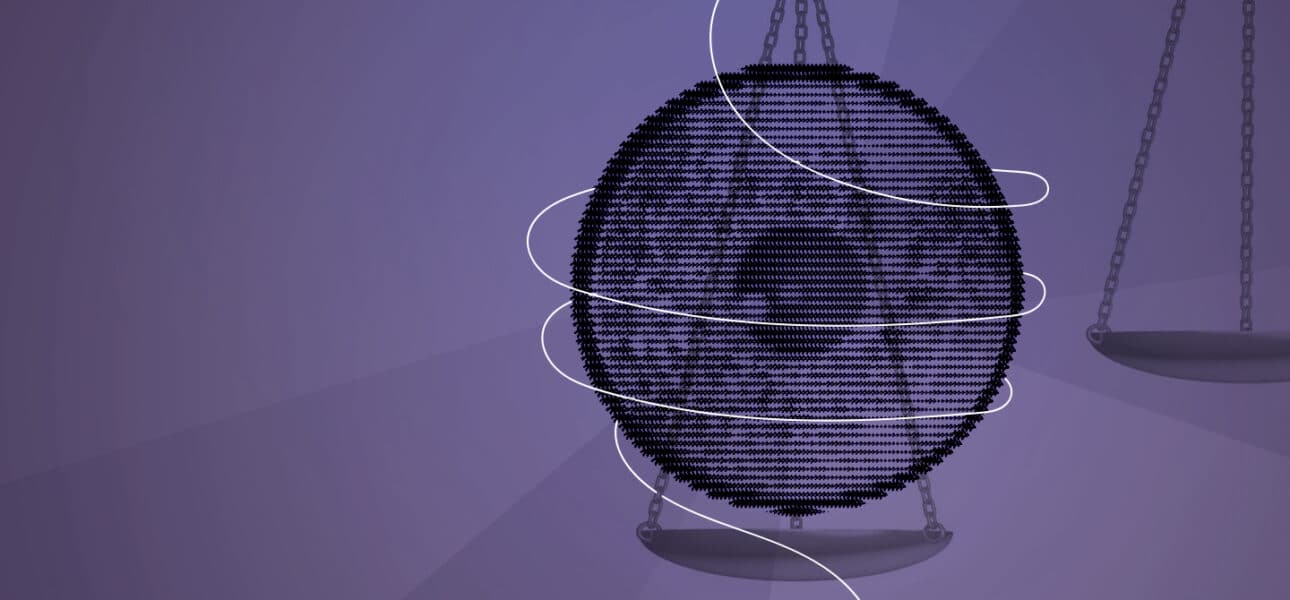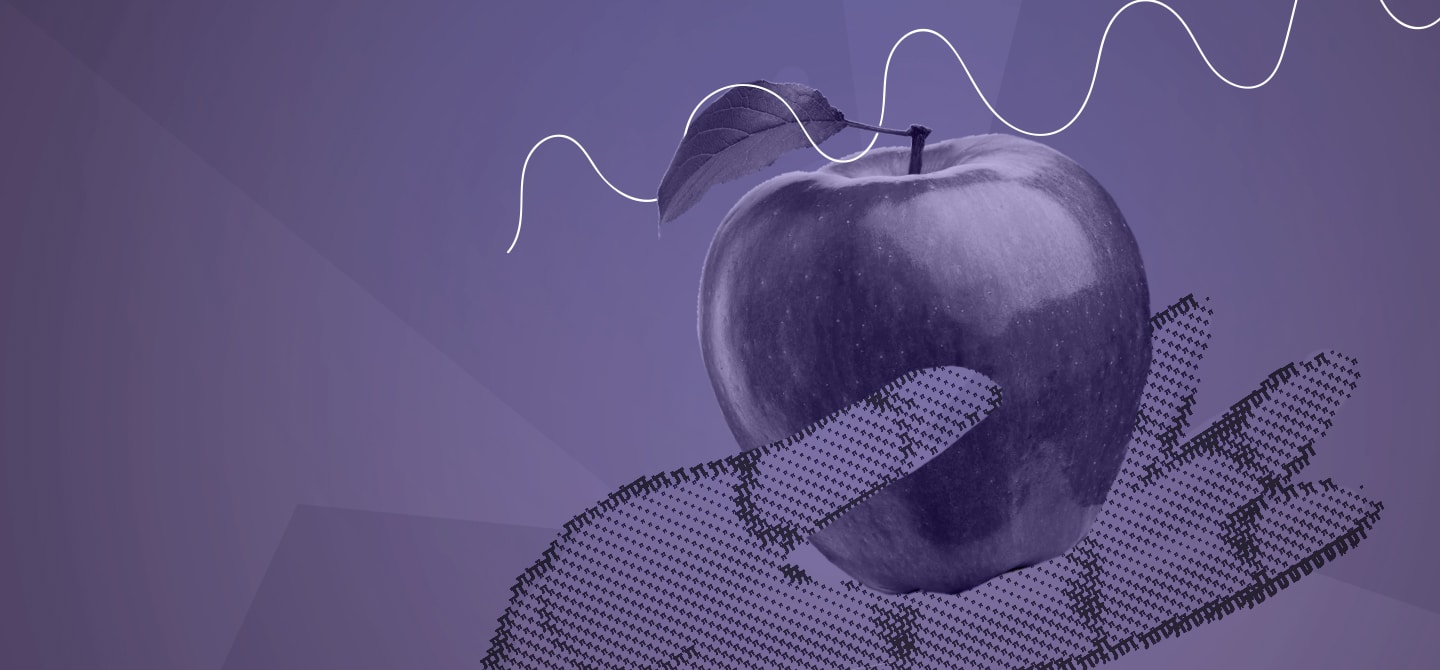#1 Generative AI: an intelligent revolution?
Generative AI, a different type of AI – TRUE
In the realm of artificial intelligence, there are a number of different types. Among these, generative AI, as its name suggests, stands out for its ability to generate content: text, images, video, etc. Some of the best-known current systems are ChatGPT, Bard, Midjourney and DALL‑E.
Their principle is based on probabilities: they predict the next word or the neighbouring pixel, according to what seems most likely. To do this, generative AI relies on a large language model, i.e. a deep network of artificial neurons that has been trained on a vast amount of data. In this way, the software identifies the most likely matches according to the context.
Generative AI is intelligent – FALSE
This is how generative AI performs remarkably well. They are able to establish links between multiple elements, based on an enormous volume of data. This is a complex process, involving a large number of mathematical operations, carried out very quickly.
But can we really call this “intelligence”? While the results can be astonishing, the way in which they are achieved has nothing to do with human intelligence. Nor is it “general AI”, capable of learning any task performed by a human being. Today, generative AI is more like a multiplication of narrow AIs, brought together within the same model.
Generative AI can do anything – UNCERTAIN
Generative AI is currently used in many fields: some use it to create music, others video game landscapes… As for the language models initially used to capture the semantics of words, they can now generate text, answer questions, translate content, or even generate code. But these tools still have their limitations, linked in particular to the datasets used during their training. Correlations identified at this stage can lead to errors at the generation stage. In addition, any biases encountered during the training phase are reflected in the results. For example, a translation system will tend to translate “the nurse” (in English) as “l’infirmière” (in French, a feminine version of the word), because of the stereotypes associated with the profession.
Generative AIs are not always very stable. Try it out with ChatGPT: ask the same question but vary the wording, and you’ll sometimes get different answers! These systems are based on mathematical operations that transform information into high-dimensional vectors, which makes them difficult to explain. Research is currently underway on this subject.
#2 Should we be wary of generative AI?
Generative AI can be wrong – TRUE
It is important to bear in mind that generative AI does not aim to deliver the truth, but to maximise plausibility, based on its training data. It sometimes produces false correlations between words. What’s more, if the training data contains errors or biases, the system will inevitably reproduce them. In any case, it does not seek to know whether the information provided is accurate or sourced! This leads to the frequent and unpredictable appearance of “hallucinations”, i.e. incorrect responses or incoherent images.

For example, according to a study by the University of Hong Kong1, ChatGPT (version GPT‑3.5) has an accuracy rate of 64%. Would you take the word of someone who has more than a one in three chance of being wrong?
Generative AI will rebel and take over – FALSE
As soon as artificial intelligence seems to reach a new stage, fantasies of machine uprisings, influenced by science fiction, resurface. We shouldn’t indulge in excessive anthropomorphism: generative AI simply predicts probabilities – in admittedly complex ways. They do not feel emotions, nor do they have consciousness. So, they cannot have a “will” to rebel.
In 2015, the American AI researcher Andrew Ng2 said that fearing a possible AI revolt was like “worrying about overpopulation on Mars”, when “we’ve never set foot on the planet before.” Even if the technology has evolved considerably in recent years, the comparison still rings true!
Generative AI raises security and confidentiality issues – UNCERTAIN
Today, we need to be aware that most generative AI models are hosted on American servers. Under the Patriot Act and the Cloud Act, the data sent can be retrieved by the American authorities. In addition, the data supplied to these generative AIs is undoubtedly reused to improve the models, making it possible to retrieve this data in future queries. This can therefore represent a risk, particularly for businesses, whose data security and confidentiality are under threat. There are, however, hosting solutions with dedicated, closed spaces, or open-source generative AI alternatives that can be installed on local servers.
However, as is often the case, regulations eventually adapt to the new technological context. For example, at the end of 2023, the Council of the European Union and the European Parliament reached agreement on legislation on artificial intelligence (AI Act)3. The text will undoubtedly be refined, but it will provide a better framework for the use of AI, in compliance with European law (including the RGPD).
#3 Generative AI: an assistant or a threat to workers?
Generative AI can replace humans for certain tasks – TRUE
The capabilities of generative AI make it very useful in the professional sphere. It can draft content, write lines of code, draw up a training plan, etc. But what it produces generally requires the human eye to check its accuracy, personalise the message, add a more sensitive touch, etc. It is therefore a tool for increasing productivity, freeing up time to work differently.
Some jobs could disappear, however, for lack of sufficient added value. But isn’t that always the case with technical progress? Didn’t lamplighters, for example, disappear with the advent of electric lighting?
Generative AI will put millions out of work – FALSE
But let’s remain measured about the professional consequences of generative AI. At the end of the day, it’s just a new tool – a very useful one – at the service of human beings. And changes in the labour market depend on many parameters… Have automatic checkouts completely replaced the need for cashiers? Has e‑learning replaced schools and teachers?
What’s more, the rise of generative AI is likely to be accompanied by new professions, such as prompt engineering, a discipline that aims to optimise the queries formulated to the AI, so as to obtain the best possible results. According to the International Labour Organisation (ILO)4, “generative AI is more likely to increase than destroy jobs by automating certain tasks rather than replacing a role entirely”.
How far will generative AI go? – UNCERTAIN
What will happen in the long term? How will generative AI evolve? Predicting its future is tricky: who could have predicted the current situation a few years ago? Nevertheless, certain trends are emerging, such as the hybridisation of systems. For example, RAG (retrieval-augmented generation) involves combining generative AI with a search engine to improve the relevance of results and limit hallucinations.
Finally, generative AI cannot develop without addressing its ecological footprint. Its models require an enormous amount of data and computing power. A new approach is already being explored to optimise the necessary resources: frugal AI.








